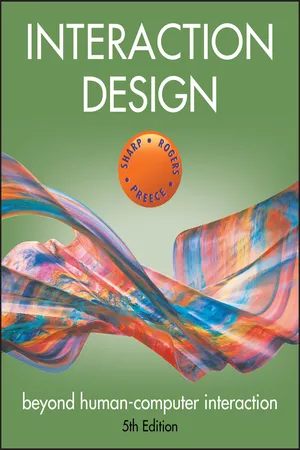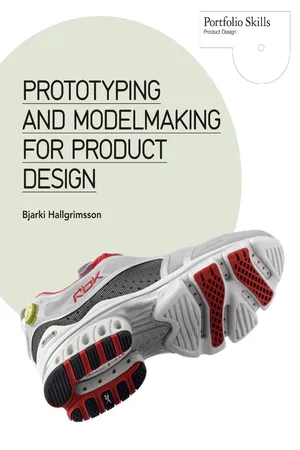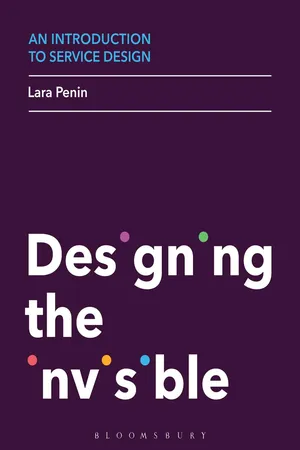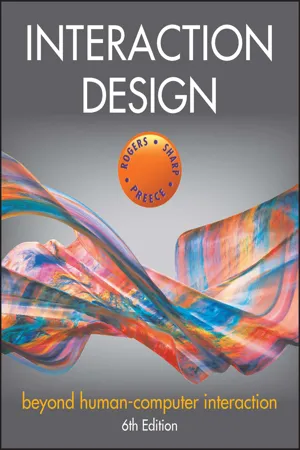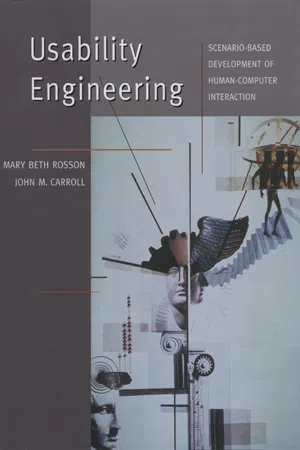Technology & Engineering
Prototyping
Prototyping is the process of creating a preliminary model or version of a product or system to test and validate its design and functionality. It allows for early feedback, iteration, and refinement before full-scale production. Prototyping is commonly used in technology and engineering to identify and address potential issues, improve user experience, and ensure the final product meets requirements.
Written by Perlego with AI-assistance
Related key terms
Related key terms
1 of 4
Related key terms
1 of 3
10 Key excerpts on "Prototyping"
- eBook - ePub
Mastering UX Design with Effective Prototyping
Turn your ideas into reality with UX prototyping (English Edition)
- Apurvo Ghosh(Author)
- 2023(Publication Date)
- BPB Publications(Publisher)
Similarly, while cooking a dish, you can write down a recipe to test, and update the ingredients depending on how the results tasted. Similarly, this book is also a prototype. The technologies and the tools explained in this book will continue to evolve, and I would keep writing the updated versions.Prototyping is the process of creating a design idea only for testing and assessment purposes. As per the Collins dictionary, the definition for prototype is, “A prototype is a new type of machine or device which is not yet ready to be made in large numbers and sold .”Prototype is a design model that helps teams apply ideas and test them on users, which would tell them how the final product works. Accordingly, they can improve and corroborate the designs, which would help the organization release the right products. They let you experience how the product would work, how the screen transitions would work, and consequently, allow you to test the usability and completeness of the design. But many people from the non-IT and IT fraternity think that prototypes are finished products, which is absolutely ludicrous. Designers tend to create prototypes that have a certain degree of fidelity associated with them. In reality, prototypes can have any type of fidelity you need – from paper sketches to fully realized designs. Depending on what your clients’ requirement is, they can simulate a small or entire part of the interaction of how the application is supposed to work.In other words, Prototyping a product is important because it has the following characteristics:- It provides an accurate test of the design and its intended function.
- It allows the prototype design to be tested in its environment. The possible design issues, which came up during the testing process, can be highlighted and updated ahead of the creation of the final product.
- eBook - ePub
Interaction Design
Beyond Human-Computer Interaction
- Helen Sharp, Jennifer Preece, Yvonne Rogers(Authors)
- 2019(Publication Date)
- Wiley(Publisher)
Chapter 2 , “The Process of Interaction Design,” in which solutions or concepts are created, prototyped, tested, and iterated. The final product emerges iteratively through repeated design-evaluation-redesign cycles involving users, and prototypes facilitate this process. There are two aspects to design: the conceptual part, which focuses on the idea of a product, and the concrete aspect, which focuses on the details of the design. The former involves developing a conceptual model that captures what the product will do and how it will behave, while the latter is concerned with the details of the design, such as menu types, haptic feedback, physical widgets, and graphics. The two are intertwined, and concrete design issues will require some consideration in order to prototype ideas, and Prototyping ideas will lead to an evolution of the concept.For users to evaluate the design of an interactive product effectively, designers prototype their ideas. In the early stages of development, these prototypes may be made of paper and cardboard, or ready-made components pulled together to allow evaluation, while as the design progresses, they become more polished, tailored, and robust so that they resemble the final product.This chapter presents the activities involved in progressing a set of requirements through the cycles of Prototyping and construction. The next section explains the role and techniques of Prototyping and then explores how prototypes may be used in the design process. The chapter ends by discussing physical computing and software development kits (SDKs), which provide a basis for construction.12.2 Prototyping
It is often said that users can't tell you what they want, but when they see something and get to use it, they soon know what they don't want. Prototyping provides a concrete manifestation of an idea—whether it is a new product or a modification of an existing one—which allows designers to communicate their ideas and users to try them out.12.2.1 What Is a Prototype?
A prototype is one manifestation of a design that allows stakeholders to interact with it and to explore its suitability. It is limited in that a prototype will usually emphasize one set of product characteristics and de-emphasize others (see Box 12.2 - Phillip A. Laplante(Author)
- 2010(Publication Date)
- Auerbach Publications(Publisher)
[8]With these points in mind, engineers developed software Prototyping as an effective approach to addressing the difficulties that pertain to gathering and validating requirements. The following sections explore the concept of this worthwhile and widely used technique. They describe how Prototyping helps to overcome these difficulties and show how different forms of Prototyping have evolved in response to varying situations and needs.Prototyping CONCEPTSThe canonical form of software Prototyping involves developing a mock-up of a software system, or part thereof. The mock-up is built to provide a facility to explore and learn about potential features, properties, or characteristics that are required in a final product, to investigate limitations, or to investigate possible development strategies. This section explores the conceptual basis of Prototyping, provides a rationale, and elaborates upon the key challenges in developing software that it aims to address.Ultimately, Prototyping is used to provide clarity in the development process, building confidence that any resulting requirements specification will more accurately reflect what is actually required. The features often demonstrated by prototypes are those thought to be in need of clarification before further development progresses. Indeed, Prototyping may be regarded as a technique for knowledge acquisition; the knowledge gained is used to inform the development of the software requirements specification.- eBook - ePub
- K.M. van Hee, H.G. Sol(Authors)
- 2014(Publication Date)
- North Holland(Publisher)
strawman Prototyping. In fact, it will be argued that Prototyping should be thought of as a primary technique for validating and refining the conceptual model for a system. Before elaborating this argument, it will be helpful to discuss Prototyping in greater detail.In general, the purpose of a prototype is to learn something about a proposed system during the early stages of development, to avoid the excessive cost of discovering important mistakes later on. A prototype will be said to be cost-effective to the extent that it delivers useful results of this kind sufficiently early in the development process.2.1 Evaluative Prototyping to reduce risk
One of the primary uses of Prototyping is to reduce risk in the software development process by facilitating the early resolution of uncertainty. To do this, a Prototyping effort must be focused appropriately. Though it may be tempting to begin by Prototyping some technical aspect of a proposed design, this does not always (or even often) address the areas of greatest risk in an information system effort. Often the areas that most deserve Prototyping effort will have to do with functionality, user interface, system integration, reliability, and performance. These aspects bear directly on the ultimate success of the system in its target environment. They are also all closely tied to the choice of an appropriate conceptual model, as discussed below (Section 3.2 ).In cases where the uncertainties in a software development effort involve relatively objective questions, such as whether a given technique will work or not, Prototyping can often provide an answer by direct experimentation. For example, technical or performance uncertainties may be resolved by building a prototype that demonstrates that a proposed implementation approach produces a feasible solution to a technical problem. Similarly, system integration uncertainties may be addressed by building a prototype that demonstrates that a proposed approach actually works with existing systems, databases, or networks. These are examples of “demonstration proofs” where the prototype proves that something is possible by actually doing it (though differences in scale or other constraints between the prototype and the proposed system may still leave some residual uncertainty as to whether this “proof is valid). - eBook - ePub
Prototyping and Modelmaking for Product Design
Second Edition
- Bjarki Hallgrimsson(Author)
- 2012(Publication Date)
- Laurence King Publishing(Publisher)
In closing it should be noted that product designers have to work with professionals from other disciplines where the term prototype could be used to describe many things that are not three-dimensional. Software designers use the term prototype in the context of code. Electronics engineers speak about Prototyping printed circuit boards. Similarly, when an interaction designer speaks about a paper prototype, it is in reference to mocking-up screen interfaces for computers. When they speak about a wireframe they are referring to the layout of a website, whereas in product design this refers to lines in space that define the edges of a physical product in a CAD model. It is worthwhile becoming more aware of these semantic differences since product design has become inherently interdisciplinary.This test setup was built by Mixer Design Group to simulate and test the effect of a dog biting a pet toy. The metal rods and clamping pressure mimic the dog’s mouth.From Start to Finish: Comprehensive Case StudiesThe use of prototypes will now be shown in the context of a few complete professional real-world design projects. As can be seen, the exact nature of the process will vary from organization to organization, as well as with the scope of the project. Student projects may last a few days or a whole year. In industry, projects could last for several years and be part of an ongoing productdevelopment process.Case Study Chair_ONE and MytoThe work of Munich-based Konstantin Grcic Industrial Design (KGID) spans a range of products, from furniture to kitchenware. Konstantin Grcic’s chair designs have received particular acclaim, including Chair_ONE for Magis, and Myto, a cantilevered plastic chair created in collaboration with BASF and the furniture manufacturer Plank.In exploring design solutions, Grcic’s process moves back and forth between drawing, computer, and quick prototypes. There is a playfulness and curiosity in the early prototypes that is focused yet experimental. Grcic gives many reasons when asked about the importance of making prototypes. For one, he has observed that when someone is building something physical, other people tend to gather around and give creative input more readily than when someone is working on the computer. Quick explorative prototypes can be examined, destroyed, and then reconstructed quickly. This is a form of iteration that necessitates that neither the prototype nor the design be seen as “too precious” early on. Instead the focus is on learning, keeping the prototypes at what he terms “an appropriate level.” He employs all kinds of materials and approaches in building his prototypes, depending on what is being tested. - eBook - ePub
- Lara Penin(Author)
- 2018(Publication Date)
- Bloomsbury Visual Arts(Publisher)
10 Prototyping, testing, iterating10.1 Introduction10.2 Case study: YTA People’s Pharmacy by Hellon10.3 Interview with Juha Kronqvist10.4 Case study analysis10.5 Methods and toolsPhysical PrototypingPrototyping digital interactions: Low- and high-fiService experience simulation10.6 Learning features10.1 IntroductionPrototyping is a crucial element of design activity and is the fundamental process through which you will learn and make decisions. It is both a research tool and a design development tool. It is the process whereby design concepts can be tested and refined in a highly tangible manner. As you create rough and dirty iterations of future services, the process of Prototyping can inform your decision making as you move toward the final product. Prototypes teach you about what works, what doesn’t, and where improvements can be made.In each design field, Prototyping may take on a different form. For example, industrial designers prototype to learn and decide about material, colors, features, functions, and components of objects and their production processes. Visual designers prototype to learn and decide about message and aesthetic choices, usability, and semiotics. Architects and interior designers prototype to learn about space, flow, materials, and construction aspects. For interface designers, Prototyping is all about access and usability, flows, and the organization of information.For service designers, our products largely consist of time-based experiences and related artifacts. As a result, our prototypes might involve a combination of aspects from other design fields, coordinating them into a single, coherent entity that comes to life in different mediums and forms over time. This may be through physical objects, space, dialogues, communication and signage, or digital interfaces. When Prototyping services, we are concerned with creating artifacts and opportunities for experiences that define the service so that we might learn from how these elements interact in real time. - eBook - ePub
Interaction Design
Beyond Human-Computer Interaction
- Yvonne Rogers, Helen Sharp, Jennifer Preece(Authors)
- 2023(Publication Date)
- Wiley(Publisher)
(2018) designed an approach to facilitate citizen engagement in a smart city project. They used an integrated approach of online and offline activities that was tailored to local contexts and showed how it is possible to engage citizens to address their current concerns. Edwin Blake and colleagues (2021) explore how a single community-based design success may be scaled to cover a region or nation. They used temporary “scaffolding” that enabled an individual to perform beyond their base expertise and support their learning. 12.2 Prototyping Prototyping provides a concrete manifestation of an idea—whether it is a new product or a modification of an existing one—which allows designers to communicate their ideas and for others to try them out. 12.2.1 What Is a Prototype? A prototype is one manifestation of a design that allows stakeholders to interact with it and to explore its suitability. It is limited in that a prototype will usually emphasize one set of product characteristics and de-emphasize others (see Box 12.2). Prototypes take many forms, for example, a scale model of a building or a bridge, or a piece of software with limited capabilities. A prototype can also be a paper-based outline of a display, a collection of wires and ready-made components, a digital picture, a video simulation, a complex piece of software and hardware, or a three-dimensional mockup of a workstation. In fact, a prototype can be anything from a paper-based storyboard to a complex piece of software and from a cardboard mockup to a molded or pressed piece of metal - eBook - ePub
Usability Engineering
Scenario-Based Development of Human-Computer Interaction
- Mary Beth Rosson, John M. Carroll(Authors)
- 2001(Publication Date)
- Morgan Kaufmann(Publisher)
In fact, two prototypes were demonstrated at this meeting, with rather different objectives. The core team built a rapid prototype in Smalltalk, showing a very basic user interface but including a skeleton for underlying system services. The consultants used an interface scripting language to enact user scenarios. The core team’s prototype looked less finished, but was a concrete beginning on an actual implementation, whereas the consultants’ prototype looked very finished, but was only designed to focus goals and issues. The project team could not escape the obvious, albeit superficial, competition between the prototypes; the representative from the publishing company (the least technically sophisticated member of the entire team) was clearly beguiled by the consultants’ prototype. Tension between the two early visions emerged, with long-lasting impacts on the project (see Carroll 2000 for more discussion). A logical entailment of iterative design is that prototypes are constructed and evaluated to guide redesign and refinement. A prototype is a concrete but partial implementation of a system design. Prototypes may be created to explore many questions during system development—for example, system reliability, bandwidth consumption, or hardware compatibility (Sommerville 1992). A user interface prototype is a prototype built to explore usability issues (Wasserman & Shewmake 1982). Prototypes can be developed in service of many goals—to discover or refine user requirements, inspire or explore design ideas, share or co-develop designs with user participants, make a precise test of specific open issues, and share or deploy early implementation efforts. The most common use of prototypes in usability engineering is to collect usability test data. But as illustrated in the sidebar on page 203, the goals of Prototyping are not always clear even within a highly motivated team of experts - eBook - ePub
Corporate Innovation
Disruptive Thinking in Organizations
- Donald Kuratko, Michael Goldsby, Jeffrey Hornsby(Authors)
- 2018(Publication Date)
- Routledge(Publisher)
Now that you have a more refined prototype, you’ll be able to receive even better feedback on whether your idea is hitting the mark, and how it might really work. Be open to the feedback and make changes as needed. Even though you’re much further along in the design process, it’s okay to continue making changes. Use simulations when you can, but also build a prototype at an intermediary phase of your design if it’s helpful. The purpose of a prototype is to facilitate learning for improving your idea. As A.G. Lafley, former chairman and CEO of Procter & Gamble, tells his employees:He adds:The essence of Prototyping is try and try again, iterate and reiterate. The key is not to seek perfection at any single step, but, through trial and error, to get a little improvement all along the way. Learn; get closer; learn more; get a little closer. And continually build on the insights of the user.28Prototyping is the process of finding mistakes, and of adding value, so don’t worry about perfection . . . the key is to get the ideas out there in tangible form; the more people are comfortable with this show-and-tell, the more ideas that will be generated, which is the point.29Advanced prototypes are judged by higher expectations of quality. The three criteria that determine the quality of a prototype are functionality, expressivity, and credibility . Functionality is met if the product is able to do what the customer expects of it. The product “must be able to function as a useful, effective and also perhaps a desirable object.”30 For example, carabiners are very useful tools for rock climbers to hook their ropes through. They trust that the carabiner will not break if they fall off the side of a mountain. Expressivity means that the product looks like what the customer expects it to. It can be original, but it must not be too far away from the norm or else customers may be confused by its appearance. If a customer has to ask, “What is it?” you’re probably missing the mark in your design. Regarding the carabiner example, a climber wants to know that their equipment meets traditional standards. With their lives depending on their equipment, they don’t want to take a chance on using carabiners that look too experimental or unreliable. Credibility - eBook - ePub
- Thomas J. Day(Author)
- 2022(Publication Date)
- CRC Press(Publisher)
Figure 2.8 , and the concept that Systems Engineering, Engineering Management and Project Management are inherently linked. Yet, to accomplish these tasks, the main areas of focus are still the Proof-of-Concept and the eventual Detailed Design that results from the iterative process between the development of the Initial Design and the Specification.A Prototype is the result of a detailed Specification, which will eventually produce a Detailed Design package available for testing and evaluation. It is not meant as a final product, but to ensure the robustness the design.It can be clearly stated that there is an iterative process between the Proof of Concept and the Detailed Design development. One requires the other to be performed correctly, as technology development usually means discovery by experiment and experience. This can only occur as an iterative process with the Proof-of-Concept feeding the Initial Design, and the behavior and performance of the Initial Design feeding and evolving the Specification.Proof of Concept
The entire idea of a Proof-of-Concept is a platform or pilot where the feasibility of a technology can operate as envisioned, requirements can be tested against for validation, and the technology developed can be tested for verification in the generation of a Specification. A specification is, and will eventually lead to a Detailed Design package where the product or service can eventually be built. Every step along this path becomes critical as, without it, serious design flaws will permeate and fester in the core design.Proof of Concepts are separated from the formal design process. The reason is they tended to exist prior to the initiation of any formal design undertaking, and therefore must be treated in a different manner. As a matter of classification, the text separates pilot Proof of Concept undertakings from the basic or more mature Proof of Concept that is utilized in the Detailed Design process.
Index pages curate the most relevant extracts from our library of academic textbooks. They’ve been created using an in-house natural language model (NLM), each adding context and meaning to key research topics.
Explore more topic indexes
Explore more topic indexes
1 of 6
Explore more topic indexes
1 of 4

